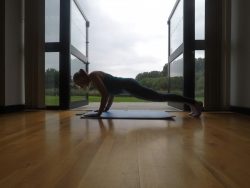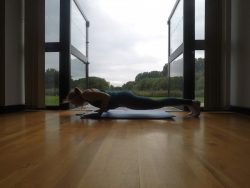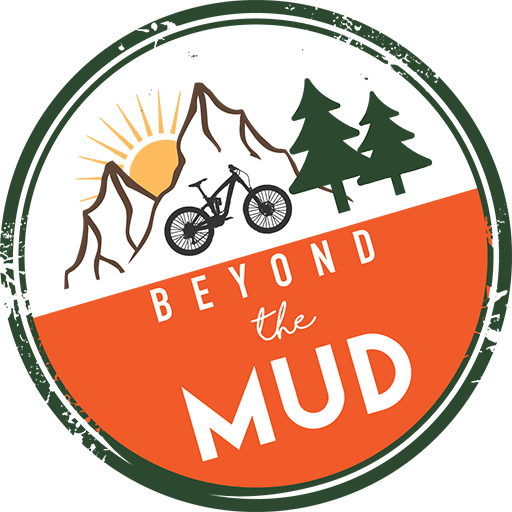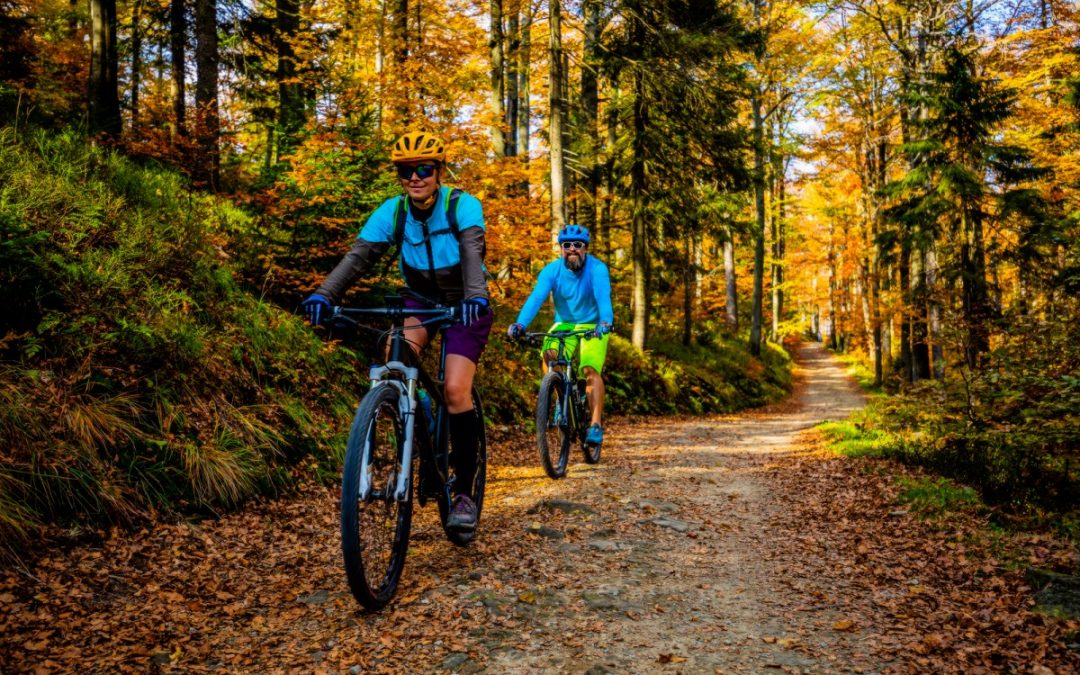
by Matt Adrank | Aug 27, 2019 | Biking Adventures
British Cycling, with support from mountain biker and Olympic gold medallist Chris Boardman, has issued a call to reform right of way legislation that currently bans cyclists from over two-thirds of the public footpaths across England and Wales.
According to the Daily Telegraph, those behind the campaign believe that the current laws are confusing and outdated, only allowing people to enjoy beauty spots around the country if they’re on foot – such as the Cotswold Hills.
Unless permitted by the landowner, cycling on footpaths in England and Wales is typically considered trespass but local bylaws or traffic regulation orders relating to specific footpaths can make it a criminal offence.
Commenting on the news, head of campaigns with Cycling UK Duncan Dollimore said: “Conflict sometimes arises because people feel either entitled or annoyed because they perceive someone is using their particular space.
“Cycling UK wants to see England develop a better, more modern system for determining access rights – one based on suitability of use rather than historic use.”
But head of advocacy and policy for The Ramblers Gemma Cantelo made further comments, saying that some of the paths aren’t suited to becoming multi-use routes because of their physical features of their character.
As Cycling UK explains, there are 146,000km of public footpaths in England and more than 26,000km in Wales. If the majority of English footpaths were open to cyclists, it could more than triple the mileage that biking enthusiasts can enjoy, allowing them to see even more of the wonderful countryside we have right on our doorstep.
Looking to find out more about mtb weekends in north Wales? Get in touch with us today.

by Matt Adrank | Jul 25, 2019 | Biking Adventures
There are plenty of reasons to head to Scotland for a mountain biking adventure, and now one more has been added to the list.
The Tweed Valley Trails Association (TVTA) has announced a new agreement with Forestry and Land Scotland (FLS), which gives the TVTA permission to officially maintain three mountain biking trails that are currently being used unofficially.
All the new trails are based in Caberston Forest, which is known by local riders as The Golfie. It’s long been a popular spot for mountain bikers.
Commenting on the new agreement, South Scotland region manager with the FLS Sallie Bailey said: “The Tweed Valley is a mecca for mountain biking and has a long history of world-class riding for all abilities. We want to build on this and strengthen the links we already have with the mountain biking community.”
The agreement will be reviewed on an annual basis, and is a pilot for how this kind of collaboration could work elsewhere in the future.
The TVTA was formed specifically to engage with local landowners about unauthorised mountain bike trails. They want to promote a culture of sustainability and responsibility and involve the local biking community as well as landowners in trail management.
Co-chair of the TVTA Neil Carnegie said they were “delighted” that the FLS is embracing the mountain biking community in this way, adding that they “can’t wait to get working on the ground, our tools into the dirt and start making a difference”.
Earlier this year we pointed out how much investment is flowing into mountain biking north of the border, so the announcement that the trails in Caberston Forest are set to be officially maintained is more positive news for the riding community.
Looking for mountain bike tuition? Come and see us today.
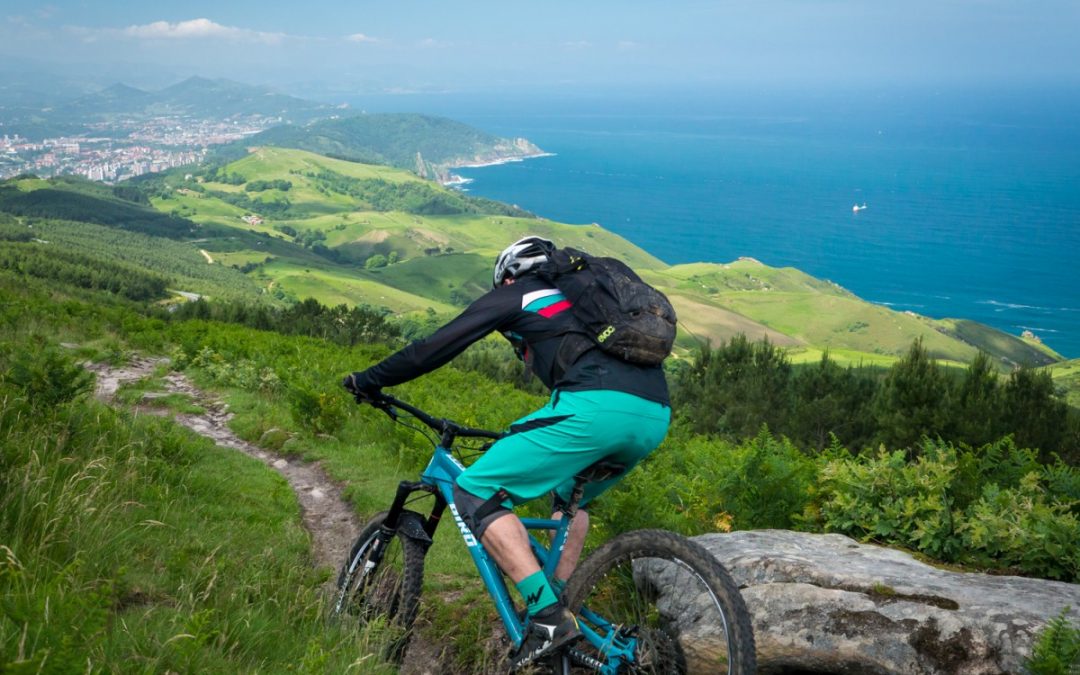
by Matt Adrank | Jul 22, 2019 | Biking Adventures
Summer is finally here with much of the UK basking in hot temperatures and enjoying clear blue skies. However, while many of us are relishing in the warm weather and sunny climes, those planning on a mountain bike holiday over the next few days need to take care by packing essentials to protect themselves from the sun.
– Scorching temperatures
Temperatures have soared this week, and weather forecasters predict the mercury could hit 35C in some areas of Britain over the next few days.
Indeed, the BBC reports that temperatures might even beat the all-time record of 38.5C on Thursday, surpassing the reading taken in Faversham, Kent, in August 2003.
Speaking with Sky News, Joanna Robinson said: “There’s now an 80 per cent chance we’ll break the July temperature record on Thursday and a 40 per cent chance of recording the hottest ever day.”
While the sunny weather tempts most of us out of our offices and homes in a bid to make the most of it, it is also important to stay safe when the temperature soars.
– What to wear
While cyclists are restricted with what to wear when the weather is hot, it is important to choose lightweight, breathable materials that do not trap the build-up of sweat.
Cycling Weekly recommends a zip-fronted top so you can open it up more, depending on how hot you are, while a lightweight base layer will help with removing sweat from the skin.
When it comes to sunglasses, choose those with 100 per cent UV filtering lenses, as this will prevent dust and insects flying into your eyes.
– Protection
As well as the right clothes, it is also important to prepare for your trip by wearing – and packing – suncream. As well as avoiding unflattering cycling tan lines, by putting on a high factor suncream, you will reduce your risk of sunburn, thereby protecting yourself against skin cancer.
– Water
Whatever you do, make sure you bring plenty of water on your ride. With the temperature as hot as it is, you can get dehydrated incredibly quickly, particularly if you are sweating a lot.
According to the Institute of Medicine, cyclists need to drink two gallons of water on a hot day to prevent dehydration from setting in.
Bring enough water for the day and stop regularly so you can drink properly. It is a good idea to put some ice cubes in the bottles at the beginning of the day, as this will help keep your water cool, also try using dyrolyte as a way to replenish salts on a long ride
Don’t forget to pack enough food too. While the hot weather might affect your appetite, it is important to continue eating so your energy levels do not plummet during a long ride. Fruit, such as melon, or raw vegetables help to replenish lost fluid, while grains soak up water while cooking, which is then absorbed by the body during digestion, making them an ideal choice too.
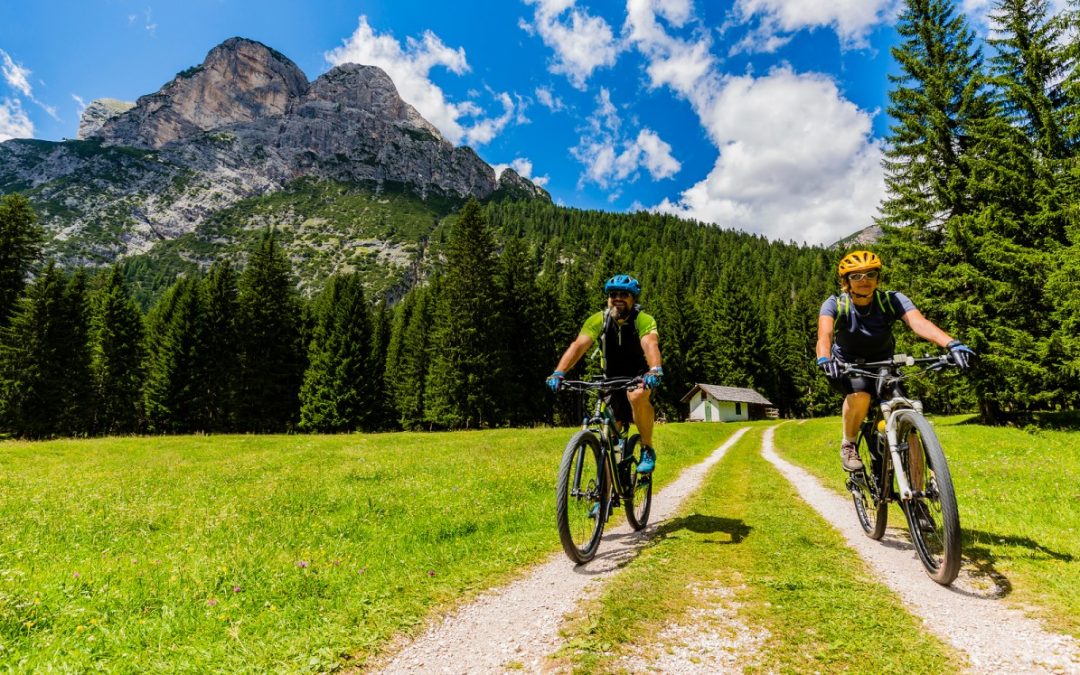
by Matt Adrank | Jul 17, 2019 | Biking Adventures
If you’re planning an active break on two wheels this summer then you could do a lot worse than heading to Europe for some mountain biking.
There are countless exceptional trails on the continent, and Deutsche Welle recently rounded up some of the top spots to consider if you haven’t picked your mountain biking destination yet.
First up was Lake Garda in Italy. One of the most appealing things about this spot is that it boasts trails to suit every ability. There are downhill, freeride and endurance routes to tackle, not to mention stunning scenery.
Alpe d’Huez in France also draws in mountain bikers each summer. The ascent is best known for its part in the Tour de France, but as any mountain biker knows, the real fun is in the descent.
The Megavalanche trail is what attracts mountain bikers. You’ll need to get a cable car to Pic Blanc some 3,330 metres above sea level and from here you start your descent along steep mountain ridges down to Allemond.
It’s said to be one of the longest mountain bike descents in the world, so it’s easy to see why it’s so popular.
Another destination highlighted by the news provider was Gran Canaria in Spain. The island’s hilly interior is a delight for mountain bikers to explore.
If you’ve got a bit of time before you head off on your holiday, it doesn’t hurt to get in some extra mtb skills coaching before you go, especially if you’ll be tackling long descents.
And you don’t have to head to the continent for great mountain biking this summer though. Scotland has been investing in its mountain bike trails, so there’s a lot to discover north of the border.

by Matt Adrank | Jul 1, 2019 | Biking Adventures, Pilates
If you feel as though your fitness for mountain biking could use some work but you’re not sure where to begin, you could certainly do a lot worse than following some of the advice offered by Rachel Atherton.
Speaking to GQ magazine, she recently revealed some of her training tips and explained that her training schedule is quite fluid which keeps it interesting and means she can work around any big events or races.
Monday is typically a recovery day, however, if she’s had a race over the weekend. Tuesday is the main training day and the one that includes a host of exercises that will be useful for aspiring mountain bike racers too.
She always begins her session with activation, which are exercises targeted at keeping her on her bike and dealing with existing injuries. This is followed by two strengthening exercises – one for strength and one for power – six conditioning exercises and finishes with work for her energy systems, usually a Wattbike session or ride on her XC bike.
Rachel also fits in yoga, massages and does other exercise like stand-up paddleboarding, and swimming during her week. Nutrition is key as well, and she offered lots of insight into her diet throughout the week too.
If you’re looking to boost your general fitness to help you improve on your mountain bike, then take a look at our range of group Pilates classes available across Hampshire, to help build your core strength.
Take a look at why Pilates is such a good choice for all kinds of cyclists, not just mountain bike riders.
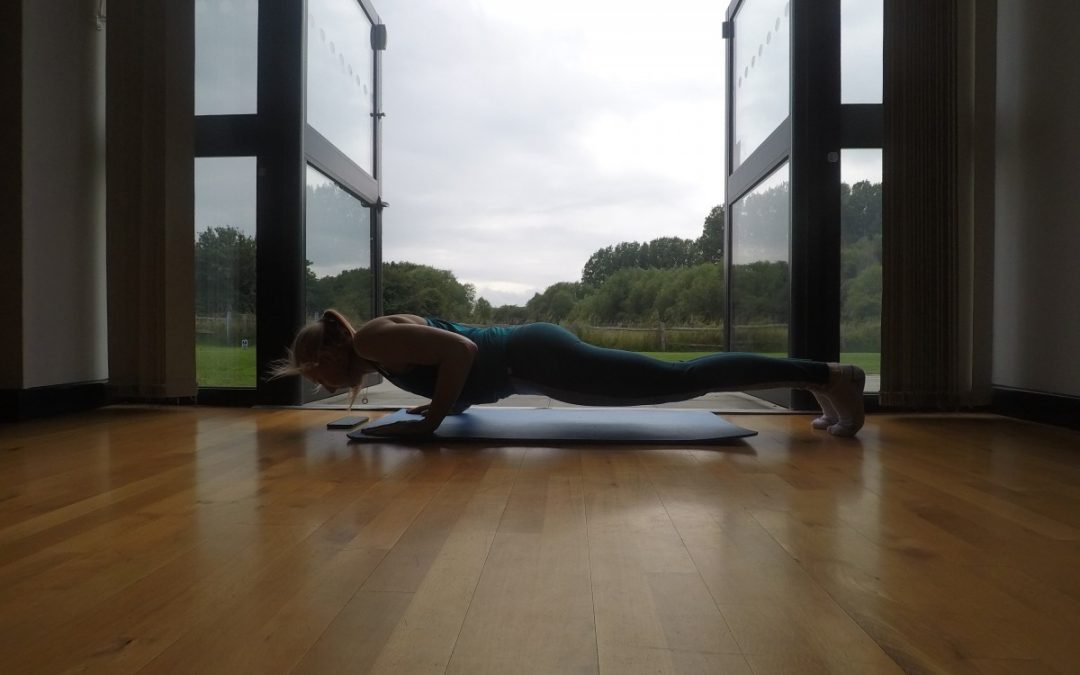
by hattenburrow | Jun 20, 2019 | Biking Adventures, How to, Pilates
“During the past three years, researchers from Napier University have been conducting a massive research project with Enduro World Series participants collecting information about mountain bike injuries, and more importantly how to prevent them. “The survey was carried out by Sports Scientist Dr Debbie Palmer of Edinburgh Napier University and covers the full breadth of participation, from our recreational rider base right through to the upper echelons of elite athletes.”
The report comprises of two separate pieces of research. The first questioned 2,000 EWS-racing athletes, from 46 countries, across 10 EWS races, recording how, when, and where they were injured. Highlights include the most frequently occurring injuries and those injuries that resulted in the most days spent off the bike recovering.
The findings are rather fascinating which low concussion rates and more injuries during the 2016 XC mountain bike race in RIO in 2016 than in the Enduro World Series events!
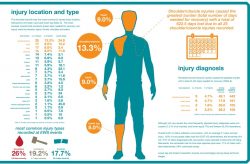 Read the full report here.
Read the full report here.
It doesn’t come as a surprise that shoulder and clavicular injuries are the most common. These injuries typically involve a long recovery – 25 days on average.
So, how can enduro rider’s improve their strength around their shoulders to decrease this injury risk.
(Picture thanks to EWS report)
What makes up your shoulder?
The shoulder is an extremely complex joint made up of three bones: the clavicle (collarbone), the scapula (shoulder blade), and the humerus (upper arm) as well as the associated muscles, ligaments and tendons.
The humerus loosely attaches to the scapula in a ball and socket joint that allows the arm to rotate in a circular manner or to hinge up and away from the body. The joint must be mobile enough to do a wide range of dynamic movements (like throwing), but also stable enough to lift heavy objects and push and pull. This compromise between mobility and stability means the muscles need to be strong and stable to protect this joint.
The major muscles involved with movement of the shoulder are the four rotator cuff muscles and the deltoid. These muscles allow the upper arm to rotate in and out, move forward, out to the side, and behind the back. Tendons are the bands of fibrous connective tissue that attach these muscles to the humerus.
Here are our top 5 shoulder stability exercises to help you combat those injuries.
- Rotator Cuff External Rotation with Band
- Palms facing up hold the band out in front of you
- Keep your elbows tucked in
- Forearms parallel to the ground
- Breath in, on the exhale open the band to the side
- Hold for the inhale
- Exhale bring arms back to the centre
- Repeat 5 times
- To increase strength add in pulses once the band is opened to the side

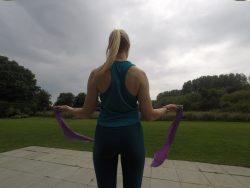
- High to Low Row
- Attach a resistance band to something sturdy at or above shoulder height. Be sure it is secure so it doesn’t come lose when you pull on it
- Get down on one knee so the knee opposite the outstretched arm is raised. Your body and lowered knee should be aligned. Rest your other hand on your raised knee
- Holding the band securely with your arm outstretched, pull your elbow toward your body. Keep your back straight and squeeze your shoulder blades together and down as you pull. Your body should not move or twist with your arm, engage your core muscles to stop this from happening
- Return to start and repeat 3 sets of 10
- Reverse Fly
- Stand with your feet shoulder-width apart and your knees slightly bent. Keep your back straight and bend forward slightly at the waist
- With a light weight (bean cans of full water bottles will do) in each hand, extend your arms and raise them away from your body.
- Do not lock your elbow. Squeeze your shoulder blades together as you do so.
- Do not raise your arms above shoulder height
- Return to start and repeat 3 sets of 10

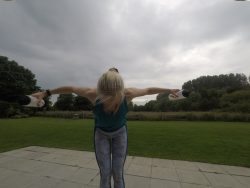
4. Press Up (Bi-cep)
-
- Start standing, bend your knees and put your hands on the floor so they are under your shoulders
- Lift your knees off the floor so you are in a sloping position, don’t stick your bum in the air or let your hips drop (keep your knees on the floor for a modified box press up)
- Hands facing forward slowly lower your nose towards the floor, elbows moving outwards
- Engage your core, (pull your belly button towards your spine) to help protect your lower back
- Inhale at the bottom, exhale and push yourself back up into the sloping position
5. Press Up (tri-cep)
-
- Start standing, bend your knees and put your hands on the floor so they are under your shoulders
- Lift your knees off the floor so you are in a sloping position, don’t stick your bum in the air or let your hips drop (keep your knees on the floor for a modified box press up)
- Hands facing forward slowly lower your nose towards the floor, elbows moving towards your hips, arms grazing the side of your body
- Engage your core, (pull your belly button towards your spine) to help protect your lower back
- Inhale at the bottom, exhale and push yourself back up into the sloping position

